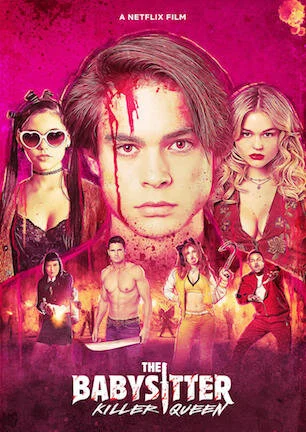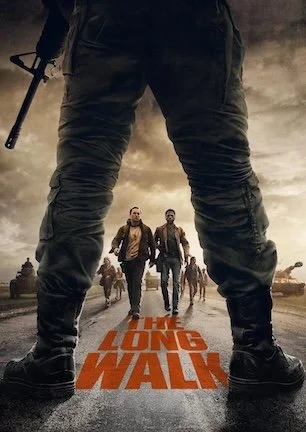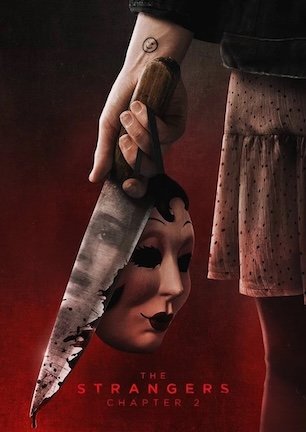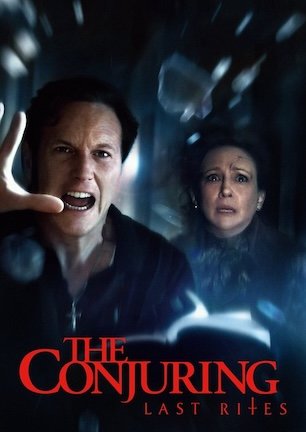Studio: Netflix
Director: McG
Writer: Dan Lagana, Brad Morris, Jimmy Warden, McG
Producer: McG, Mary Viola, Zack Schiller
Stars: Judah Lewis, Emily Alyn Lind, Jenna Ortega, Robbie Amell, Andrew Bachelor, Leslie Bibb, Hana Mae Lee, Bella Thorne, Samara Weaving, Ken Marino
Review Score:
Summary:
Two years after foiling his satanic babysitter’s murderous plans, teenager Cole stumbles into another unusual cult conspiracy.
Review:
There weren’t too many middle ground opinions on “The Babysitter” (review here). Between its attractive actors and sensationalized splatter, it was a project produced to be hyper-stylized eye candy, like a distant cousin to Zack Snyder’s “Sucker Punch” without the VFX blitzkrieg. Viewers were either won over by the spitfire snark and snappy cinematicism or were turned off by the breeziness behind it all. I personally admired the movie’s manic hum, even if the film’s flightiness still made for an “in one ear and immediately out the other” evening of evaporating entertainment.
“The Babysitter: Killer Queen” reminded me how forgettable the first film was when I sat down to watch the sequel and realized I remembered nearly none of the original. Samara Weaving was the titular babysitter. That much I knew. I think there was a cult of some kind somewhere. Was Weaving protecting a kid from it or was she in on the conspiracy? With “Better Watch Out” (review here), “Satanic Panic” (review here), and other movies about kooky cults or gonzo babysitting gigs cluttering up my recall in the interim, I have a hard time differentiating between similar setups. I believe (hope) my brain reserves that room for more important matters.
Enough bits of “The Babysitter” came back to me during “Killer Queen” that the overall haziness never really mattered. Plus quick clips cut in for “oh yeah, that happened” flashbacks to fill in various blanks as needed. Besides, since “Killer Queen” brings back virtually every character from the first film, including five who definitively died, it’s not like keeping previous events straight is a priority for anyone. “Killer Queen” may follow “The Babysitter,” but it also follows its own whims with a devil may care attitude that eschews continuity in favor of even more fantasized frivolity.
Never mind plot consistency anyway. “Killer Queen’s” more critical carryover from “The Babysitter” is a charmingly chipper cast that molds each moment to be as fun as feasible. It’s irrelevant if they’re onscreen for ten minutes or ten seconds. From Chris Wylde’s supporting performance as a dope-smoking dope of a dad to Olabisi Kovabel’s single scene as an OCD teen who thinks her uterus will explode if she steps on a crack, everyone is game to get goofy, gory, or both.
Judah Lewis capably carries so much of the load in a beefed-up role for returning character Cole (the babysittee from before), he almost made me stop thinking about how much he looks like Charlie Heaton from “Stranger Things.” Bella Thorne shows a surprising cheekiness to be semi-self-effacing by basically playing a parody of how her usual persona is popularly perceived. Ken Marino pulls a Bob Saget by sheathing enough of his “Veronica Mars”-honed huckster shtick to pull off being a sweetly sympathetic father at the same time. (And kudos to his contract for landing the “and” credit over Samara Weaving.)
Unquestionably the best thing to come out of “The Babysitter: Killer Queen” is Emily Alyn Lind’s emergence as a star on the rise. To be honest, I barely remember Lind as Cole’s crush Melanie from the first film, an expanded role she reprises here. I’ve also apparently seen her over the years in genre fare such as “The Haunting in Connecticut 2: Ghosts of Georgia” (review here) and “Mockingbird” (review here) and don’t remember her in those movies either. (To be fair, she was like 10 years old when she filmed those.)
I did take note of Lind as Snakebite Andi in “Doctor Sleep” (review here) however, and her turn in “Killer Queen” convinces me she’s only one break away from headlining her own horror film. Yes, she has a face fit for drawing eyes to the screen. More importantly and less superficially, she has the presence to keep eyes magnetized there.
Lind smoothly sets up Melanie to be a plainly personable good girl. Then she peppers in a series of spices to add flavors of manipulative deceit, sarcastic savagery, and anything else a specific moment mandates. With three dozen credits already under her belt before entering adulthood, it appears Emily Alyn Lind may have made her own Guy Woodhouse-inspired deal with the devil to make a major career leap. I expect to see much more of Lind sooner rather than later.
Seeing as I referenced a 1968 movie in the previous paragraph, I may as well mention that was also the year director McG was born. Being “of a certain age” myself (but born a decade later), I don’t feel too bad being ageist about what I will say next. Love him, like him, or loathe him, McG knows how to make slick commercial movies. But with “Killer Queen” being centered on, and at least partly targeted toward, “a collection of attention-seeking social media millennials with esteem issues,” maybe McG doesn’t belong to the best generation for tackling such topics, even in satire.
“Killer Queen” includes gags you’d expect given the preceding sentence’s parenthesized words. Trying to light a fire under her comrades, Bella Thorne tells them, “Tick-tock teenie weenies, let’s go!” The shirtless jock asks, “You want us to film this?” Thorne has to clarify, “Not the app! Like a clock!” It’s more amusing in the moment, but yeah, there are lines like this that will be awfully dated in a few years time.
Speaking of dated, one weird thing about “Killer Queen’s” humor has to do with its mish-mash of pop culture. Four different credited writers could be one culprit. Even though there are modern nods to Bear Grylls and Instagram, “Killer Queen” also makes references to Forrest Gump and Tommy Tutone. I appreciate an unofficial Large Marge “cameo” as much as any Pee-wee Herman fan. But while I question the evergreen nature of “Street Fighter” and “Terminator 2” far less, I wonder if it isn’t wiser to narrow appeal to one era’s trends instead of mixing a stew that could confuse anyone under the age of 30.
“The Babysitter: Killer Queen” is pretty much on par with the first film. Jokes fly fast. Some earn laughs. Others don’t. Based on suspicious stutters and apparent fumbling for something funny to say, I’m also 99% certain most of the adult actors improvise their dialogue to varying degrees of success. The movie’s sense of humor ultimately either synchs with your speed or it doesn’t, which means like “The Babysitter,” your opinion will lean in one clear direction and likely mimic whatever you felt the first time around.
“Killer Queen” manages to sustain a lot of “The Babysitter’s” energy, but I doubt it has legs to last for a third lap. McG’s music video approach to moviemaking stays in full swing, although his techniques of sudden slow-downs, abrupt edits, and flashy graphic overlays have had their edge significantly worn by age. If McG isn’t getting too old for this, I might be. Considering I didn’t do well with just one, I’m not optimistic my memory has the willingness to set aside additional space for further films in “The Babysitter” series.
NOTE: There is a mid-credits stinger.
Review Score: 70






It assumes everyone watching must be a dimwit too dense to understand how the most basic storytelling concepts work.